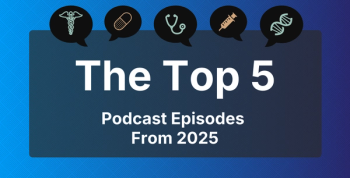
High Cost Sharing Associated With Reduced Access to Targeted Therapies for Patients With mRCC
High cost sharing is associated with reduced and/or delayed access to targeted therapies under Medicare Part D for patients with metastatic renal cell carcinoma, suggesting that financial barriers play a significant role in treatment decisions, according to a study published in Cancer Medicine.
The oncology sphere has seen the emergence of more treatment options for patients with metastatic renal cell carcinoma (mRCC); however, high cost sharing is associated with reduced and/or delayed access to targeted therapies under Medicare Part D, suggesting that financial barriers play a significant role in treatment decisions, according to a study published in
While clinic- or hospital-based intravenous chemotherapy is usually covered by a patient’s insurance, a large proportion of newer drugs are self-administered oral agents that are covered under the prescription benefit.
“Given the expense of many newer treatments, they are frequently associated with cost sharing that leads to considerable out-of-pocket costs for patients — raising important questions about whether cost sharing represents a barrier to treatment initiation,” wrote the authors of the study. “This is especially relevant for the treatment of mRCC.”
Because cost sharing requirements for oral treatments are typically both complex and high, patients covered by Medicare Part D who are not eligible for low-income subsidies are faced with a financial burden. The authors compared Medicare Part D patients with low out-of-pocket costs due to receipt of full low-income subsidies (LIS beneficiaries) to their counterparts who were responsible for more than 25% cost sharing during Medicare’s initial coverage phase (non-LIS beneficiaries).
The authors used a data extract of 2011 to 2013 from the 100% Chronic Conditions Data Warehouse Medicare claims, which contain data on all fee-for-service Medicare beneficiaries in the United States. Using the data, the authors identified patients who were newly diagnosed with mRCC with:
- 1 or more inpatient or outpatient claim indicating metastatic disease between July 1, 2011 and June 20, 2013, the first of which represented the “index date”
- First metastatic site in the liver, lung, or bone/bone marrow
- Continuous enrollment in both fee-for-service Medicare and a stand-alone Part D prescription drug plan 180 days before and after the index date
- 2 or more claims with a diagnosis of metastatic disease, occurring 30 or more days apart
- 2 or more claims for RCC occurring 30 or more days apart
- Index date during the beneficiary’s Part D initial coverage phase
- Age 65 or older on the index date
A total of 1721 patients were included in the study. Results showed that, on average, non-LIS patients were responsible for an average of $2800 or more in out-of-pocket costs for their initial oral prescription, compared to $6.60 or less for LIS patients. The authors also found that a lower percentage of non-LIS patients initiated oral therapies (risk-adjusted rates, 20.7% versus 33.9%; odds ratio [OR] = 0.49, 95% CI: 0.36-0.67, P < .001) and any targeted therapies (26.7% versus 40.4%, OR = 0.52, 95% CI: 0.38—0.71, P < .001). Non-LIS patients were also slower to access therapy.
“As oncology treatment continues to move toward outpatient therapies, there is an increasing need to identify and reduce barriers to optimal outcomes and to examine how delays or interruptions in care impact clinical outcomes and overall healthcare costs,” concluded the authors.
Newsletter
Stay ahead of policy, cost, and value—subscribe to AJMC for expert insights at the intersection of clinical care and health economics.








































